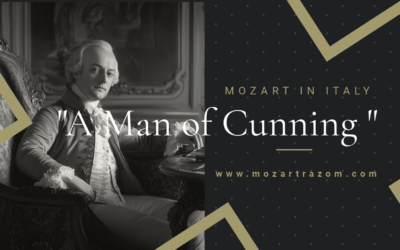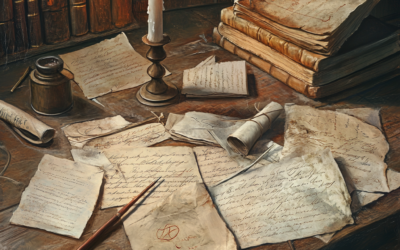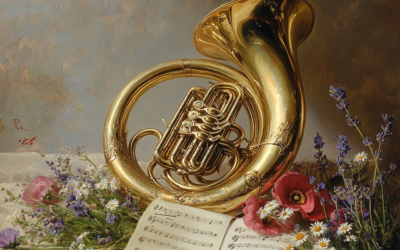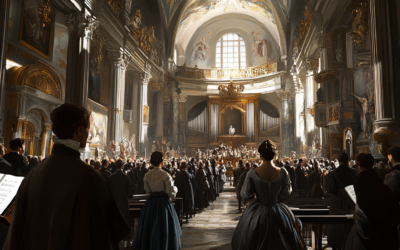The Contradictions Behind Mozart’s Bassoon Concerto K.191 and Other Puzzling Pieces
The Bassoon Concerto in B-flat Major, K.191 has long been celebrated as a foundational work for the bassoon, yet its origins remain shrouded in mystery. Originally thought to have been composed for Thaddäus Freiherr von Dürnitz, a Munich amateur bassoonist, closer examination reveals several inconsistencies in the timeline and purpose of the piece.
Coupled with the fragmented nature of the concerto’s movements, which appear disjointed and stylistically diverse, this raises questions about whether the work was intended for performance at all.
Furthermore, other works like the incomplete Bassoon Concerto in F Major, K.196d and the dubious Sonata for Bassoon and Cello, K.292a, are likely forgeries or falsely attributed to Mozart. As we revisit these compositions, it becomes increasingly clear that Mozart’s legacy is more complex and layered than previously believed.
Mozart: The Fall of the Gods
This book compiles the results of our studies on 18th-century music and Mozart, who has been revered for over two centuries as a deity. We dismantle the baseless cult of Mozart and strip away the clichés that falsely present him as a natural genius, revealing the contradictions in conventional biographies. In this work, divided into two parts, we identify and critically analyze several contradictory points in the vast Mozart bibliography. Each of the nearly 2,000 citations is meticulously sourced, allowing readers to verify the findings. This critical biography of Mozart emerges from these premises, addressing the numerous doubts raised by researchers.
""Is it truly Mozart, or merely a name we attach to what we find pleasing?"
Mozart: The Fall of the Gods
Mozart’s Bassoon Concerto in B-flat Major, K.191, often celebrated as a cornerstone of the bassoon repertoire, carries a murky history fraught with inconsistencies, much like his early violin concertos. Despite common belief, Mozart did not compose this concerto specifically for Thaddäus Freiherr von Dürnitz, an amateur bassoonist from Munich, as has been widely suggested. It was once thought that Mozart completed the piece on June 4, 1774, for Dürnitz, the same man for whom he later composed the Piano Sonata in D Major, K.284 in 1775. However, this timeline does not hold up under scrutiny.
Mozart only met Dürnitz at the end of 1774, after the bassoon concerto had already been written. Why, then, would Mozart dedicate a piano sonata to him instead of the already finished bassoon concerto? The letters between Mozart and his family make no mention of Dürnitz as a performer of the piece, nor is there any indication of another bassoonist friend who might have played it. This, in itself, raises doubts about the concerto’s original purpose and intended performer.
Musically, the Bassoon Concerto K.191 also presents contradictions. Mozart borrowed the opening theme from the Violin Concerto K.207, a work influenced by Josef Mysliveček, but the movements within K.191 feel disjointed. The first movement, with its Bohemian flavour, has a certain solidity, while the Andante is minimalist and restrained. The final movement appears to be a simple reworking of a basic dance form, creating an impression that the concerto may have been pieced together from various musical ideas, rather than crafted as a cohesive work. This leads to speculation that it may even be a sort of “pasticcio” rather than a unified composition.
Adding to the confusion is the existence of an incomplete Bassoon Concerto in F Major, K.196d, published by Breitkopf. The surviving fragment is so poorly suited to the bassoon that musicologists struggle to believe it was written by Mozart at all. Conversely, the Bassoon Concerto K.Anh.230a (K6 C 14.03), frequently attributed to Mozart, has fared better despite being the work of another composer—François Devienne. It is often performed as a “Mozart” piece simply because it is more aesthetically pleasing and commercially viable.
Around the same time as these dubious works, there is the Sonata for Bassoon and Cello (or Continuo), K.292a (K6 192c), another composition traditionally linked to Dürnitz. But, once again, there is no surviving autograph by Mozart, nor any concrete evidence tying it to him. The sole source for the sonata is a Breitkopf publication from 1805, known to be unreliable. Despite being included in Köchel’s catalogue, the sonata is almost certainly a forgery.
In these works, as in many aspects of Mozart’s legacy, we are left questioning both the authenticity and the true authorship. Whether driven by commercial interests or simply the lack of concrete evidence, many of these pieces remain attributed to Mozart, further muddying the waters of his already complex catalogue.
You May Also Like
A Revolutionary Encounter at Cremona Musica
Sharing insights on Mozart and the Neapolitan school at Cremona Musica, the premier global stage for music and culture.
#1 A Man of Cunning
In the end, Leopold Mozart’s life was a testament to survival in a world where his talents were often overshadowed by those of his more gifted contemporaries and his own son. While his “Violinschule” remains a notable contribution to music pedagogy, it is clear that Leopold’s legacy is as much about his ability to navigate the challenges of his time as it is about his musical achievements. His story is one of ambition, adaptation, and the lengths to which one man would go to secure his place in history, even if that place was built on borrowed foundations.
@MozartrazoM
Mozart’s Letters: A Legacy of Disappearances, Edits, and Forgeries
Mozart’s letters reveal missing originals, questionable authorship, and forgeries, adding complexity to his legacy.
The Curious Case of Mozart’s “Lullaby”
Though long credited to Mozart, the lullaby “Schlafe mein Prinzchen, schlaf ein” hides a murky history. Initially published by Nissen, Constanze’s second husband, it has endured as one of Mozart’s supposed works—despite a trail of doubts. In 1798, Constanze herself noted sending “another piece of Mozart’s in place of the lullaby,” raising questions about its origins. By the 20th century, researchers revealed it as the work of lesser-known composers, yet it remains deceptively tied to Mozart, its myth surviving through mere footnotes.
The Contradictions Behind Mozart’s Horn Concerto K.412
The authenticity of Mozart’s Horn Concerto K.412 remains hotly debated, as the work bears numerous contradictions in its manuscript history. The first movement may be original, but what about the rest? The inclusion of Franz Xaver Süssmayr and later editorial meddling raises serious questions about what we are really listening to when we hear this ‘Mozart’ concerto.
The Questionable Attribution of Mozart’s Offertorium K.34
Attributing Offertorium K.34 to Mozart is not just misleading, it reflects the careless methods used by 19th-century scholars to inflate his legacy. Without an autograph or solid evidence, this work should not be considered part of his output.”







